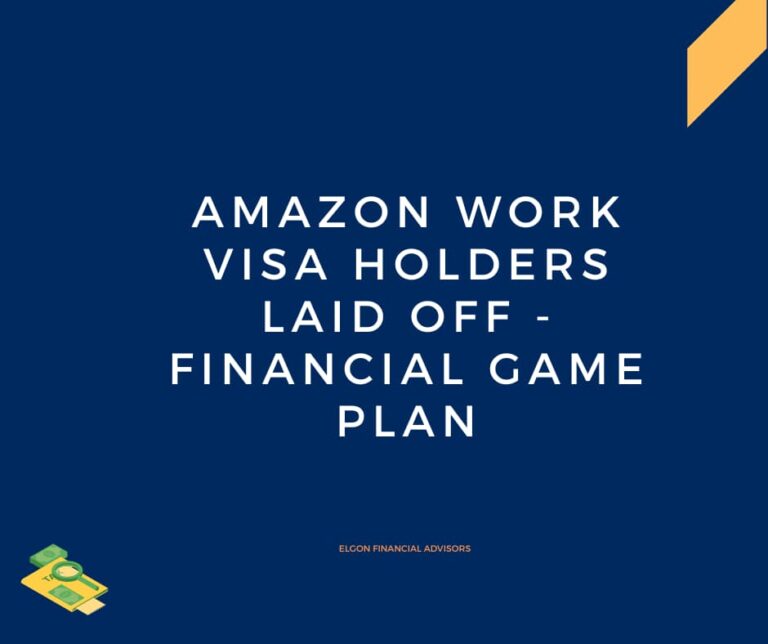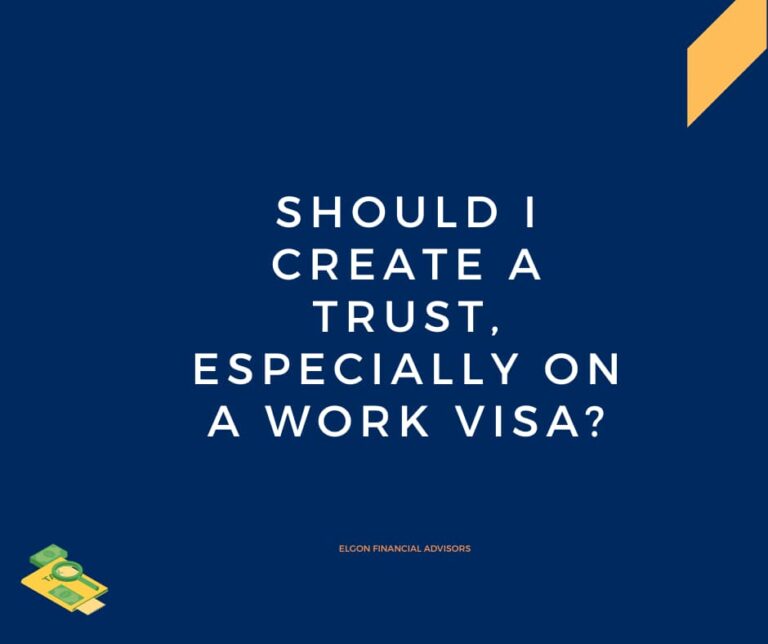Updated 8/20/2025
The challenges you face in the US when investing via special accounts like Roth, 401 (k), etc., while on a work visa are numerous. We address them alongside specific solutions.
Key Takeaways
- Addresses the common question from foreign nationals on work visas – “How do you invest in the US using special accounts while on a work visa?”
- Highlights the unique challenges faced by individuals on work visas when investing in “special accounts”.
- Discusses challenges related to investing in “future-use” retirement accounts, as well as some of the compliance requirements of brokerage firms.
- Advises on understanding visa types, considering the duration of stay, and choosing foreign nationals-friendly brokerages. Overall, a comprehensive guide on investing in special accounts while on a non-immigrant work visa.

The Questions And Kitces Article
One of the questions I get all the time is how to invest in the US using special accounts like Roth IRAs, HSAs, 401ks, 529s, etc, while on a work visa.
The work visas in question are H-1B, H1B1, L-1, O-1, TN, and E3.
This is keeping in mind that work visas are, by nature, temporary non-immigrant visas, and technically, the holder is expected to depart the US after the work assignment.
This question is from both financial advisors and foreign nationals on work visas.
I have not found one single comprehensive guide on this, so I have gone ahead and worked with the Kitces editorial team of the famous Nerds Eye View Blog to publish a very comprehensive guide for financial advisors.
It will answer the question “How do I invest on a work visa in the US?”
Kitces.com is the top leading authority for financial planning technical issues.
Very, very few advisors ever get a chance to publish anything on that site. The articles are usually so detailed, and so technical, that if a CFP (Certified Financial Planner), reads them, and takes a quiz on the same, they can get CE (Continuing Education), credits
The 7000 + word, 14-page article is heavy on technical details and geared toward advisors.
In today’s post, I’m distilling it for those on work visas and providing a high-level summary of how to approach the issue.
I’ll break it out into manageable pieces over the next couple of weeks/months, but today we’ll get started.
Use this as a guide to get you started down the investment path in the US using special accounts.
If you have specific questions regarding your situation, please reach out. Use this link to get in touch or get started.
I address the following: –
- The unique challenges facing you if looking to invest in US special accounts.
- The considerations you need to decide if it makes sense for you or not.
- The solution to get around this issue.
This being a summary, I have not included everything in the article, just a high-level overview.
A Summary Of The Work Visas Under Discussion

Every year, USCIS (United States Citizenship and Immigration Services), issues over 100,000 non-immigrant visas.
The non-immigrant visas under discussion are H-1B, L-1, O-1, TN, H1B1, and E-3. Each visa has its requirements and restrictions discussed extensively in the article.
The visas fall into two broad categories:-
Dual intent – H-1B and L-1 visas are dual intent visas, which means, the holder can start the process to become a permanent resident (green card holder), while still in the US.
The 0-1 visa is dual intent under certain conditions.
Non-Dual Intent – TN, E-3, and H1B1 are not. A holder of these visas can still get the green card petition started, but it takes a good immigration lawyer to get through the nuances of the process and avoid screwing up.
The Need For Investing In Special Accounts On A Work Visa
If coming to the US on a work visa you are most likely
- In your prime work years, between the ages of 25 and 54.
- Most likely started on an F-1 student visa.
- Moved to the US for economic opportunity.
- Have a young family, or likely to start one in the US.
- In the mass-affluent category based on your income.
So, it makes sense that you want to start investing in the US while on a work visa.
Unique Challenges You Are Likely to Face Investing On Work Visas In Special Accounts
This stems from the temporary nature of the work visas – technically the visas allow you to be in the US for a time and then you are expected to leave.
The main investing challenges on a work visa are:-
Investing in “Future-Use” Accounts, And Not Using Them As Designed
Retirement accounts available in the US (e.g., 401(k) plan accounts, Traditional and Roth IRAs, etc.) are, by design, ‘future-use’ accounts.
Their potential is most fully realized when they are left alone for long periods for use in the future.
If on a nonimmigrant work visa, the ‘future-use’ characteristic is a huge investment challenge that raises a lot of questions.
- “Is it worth investing in a long-term vehicle when I’m not sure if I’ll be able to let the account do what it’s supposed to do?”
- “Are the penalties I may have to pay to make an early withdrawal from my retirement account worth the current tax benefits available to me from having the account in the first place?”
- Would I be better off investing in other things in my home country instead of in a 401(k)-plan account through my employer? “
US Brokerage Firms Investing Challenges For Those On Work Visas
A lot of brokerage firms, don’t want to open accounts for foreign nationals on work visas due to increased compliance requirements arising from the Patriot Act of 2001.
The act is designed to prevent foreigners from funding terrorist acts via U.S. capital markets.
For example, Vanguard, simply states that “you need to be a U.S. citizen with a U.S. mailing address to open an account.”
However, this is not an issue if opening a retirement account through the employer’s chosen custodian, regardless of your citizenship status.
Lost Benefits From Certain Tax-Advantaged Accounts When Relocating Overseas
If on a work visa, there are a few possible options when it comes to long-term residency plans. Evaluate this if considering investment options on a work visa.
You don’t always have control over the outcome or the timing of what happens, which can make it especially challenging to invest while living in the US. If you are going to move out of the US, there are two options available to you:
- Become a permanent US resident/citizen and move back to your or other) country for retirement.
- Move back to your home (or other) country without changing your immigration status.
The Issue: Most countries don’t recognize the tax-free nature of certain retirement accounts (e.g., Roth IRAs, Roth 401(k) plan accounts, and HSAs).
If withdrawing the money in those countries, you are likely to pay income tax on the gains, which negates the tax-free benefits of the Roth-type accounts, as recognized by the US.
There are a few countries that recognize the tax-free nature of Roth accounts in their tax treaties with the US.
Those countries will allow you to take full advantage of the tax benefits offered by the accounts. Consider where you plan to be.
Getting Around The Investing Challenges On A Work Visa
This is a process where you need to ask yourself a lot of questions.
In addition, you need to become more knowledgeable in certain areas. Remain flexible, and be willing to evaluate your situation every time your visa situation changes.
Understand Your Visa Type And Its Tax Implications
Get a good handle on
- Any visa restrictions and visa duration
- Dual – intentionality status – in case you want to apply for a green card.
- What happens if you lose a job on the work visa
Consider How Long You Are Going To Be in the Country
If you are in the country for a short duration, it may not be worth entangling yourself into the US tax system via investing in retirement special accounts like 401ks, 403b, etc.
This is especially important based on where you are coming from.
If on the other hand, the company has a decent match, then it may be worth it to save into the accounts, simply to get the match.
If you think you are going to be here for a couple of years, and your company’s plan has good funds, and you want to lower your taxable income is crucial, then consider the pre-tax plan.
If not going down this path consider a regular brokerage account.
529 Plans Investing Challenges On A Work Visa
The question to answer is, are you saving for US colleges or colleges outside the US?
I get a lot of questions on this question, so here are two posts, I have written to address some of the issues.
How to save for your foreign-born kids while on a work visa
Can I open a 529 account on an H-1B visa?
If after going through all this, the 529 account is not an option for you, consider the brokerage account.
Use Foreign Nationals Friendly Brokerages
The firms I have found to be easiest to work with are TD Ameritrade (moving to Charles Schwab), Charles Schwab, and Interactive Brokers.
Some brokerage firms may be more accommodating to foreign nationals who wish to open accounts, but as soon as you leave the US and register a foreign address, the brokerage will often force you to close the account or prevent you from trading any equities in the account.
Find out how they’ll treat your accounts before you open them. You may have to call customer service a couple of times to get to somebody knowledgeable about the issue.
Leaving The US When You Have Special Accounts
If you have to leave the country before retirement, you have a decision to make – take the money with you or leave it here.
Each of the decisions has tax implications.
- Withdraw the money – pay income taxes on the distribution plus an early withdrawal penalty of 10% if under age 59 ½.
To mitigate this, leave the country and withdraw the money from the plan the following tax year. You’ll still pay any applicable early withdrawal penalties along with income taxes imposed by your home country (if the country has taxes on overseas assets), but the net income tax may end up being lower since the overall income will generally consist only of distributions from the retirement plan.
- Leave the money in the US until retirement – you may have to contend with your home country taxing you on the same. Leaving the money assumes the employer will allow the money to be left in the account (or roll over the funds into an IRA account) and that the custodian allows a foreign address.
Hopefully, this gives you a starting point for thinking about how to invest in the US on work visas via US special retirement accounts.
Originally published here on the Nerds Eye View Blog as Navigating Challenges In Investing For Work Visa Holders
FAQS
Can I Invest In Stocks On F-1 Or H-1B Visa?
Yes – you can invest in stocks on F-1 or H-1B Visa. However, there are specific tax implications.
Here is a post with more details: “Can I invest In Stocks On An H-1B Visa?”
Can A Non-Immigrant Individual Need To File Taxes?
Yes – all legal immigrants in the US pay federal, local, and state taxes. If you are working, then yes, you need to file and pay taxes.
Do You Need Help Investing In The US on A work Visa?
Free Financial Assessment
If not ready to start, that’s okay, but please stay on top of our regular updates by email, or by joining here. Sign Up Here.

6 Things to Do
When Starting A Job on H-1B Visa
You are starting a new job on a work visa, there are some critical things, that will set up for financial success in the first 3-6 months. Download the free guide below for the detailed list!
We never spam. By signing up you’ll also receive access to future resources right to your inbox.
Disclaimer: This article is provided for general information and illustration purposes only. Nothing contained in the material constitutes tax advice, a recommendation for the purchase or sale of any security, investment advisory services, or legal advice. I encourage you to consult a financial planner, accountant, and/or legal counsel for advice specific to your situation. Reproduction of this material is prohibited without written permission from Jane Mepham and all rights are reserved. Read the full disclaimer here.






